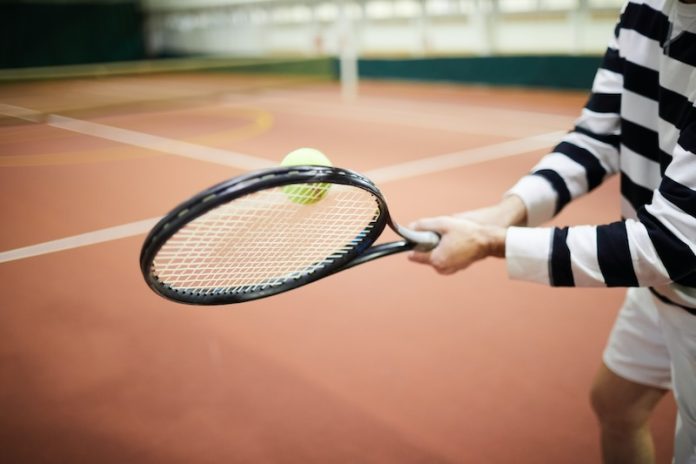
Researchers from Southern Methodist University in Dallas have explored a unique question: Can a tennis ball cause a traumatic brain injury?
This study, published in the Journal of Applied Mechanics, offers insights into a rare but possible risk in a sport known for its safety compared to high-contact sports like football or soccer.
The research team, led by mechanical engineering professor Xin-Lin Gao and his former Ph.D. student Yongqiang Li, used advanced computer modeling to simulate the impact of a tennis ball on the human head.
This technique, commonly used in car accident studies, allowed them to analyze different scenarios.
Their findings are intriguing:
- Concussions from tennis balls are rare but could occur if the ball travels faster than 40 meters per second. For context, this speed is faster than the top speed of a cheetah.
- The side of the head is more vulnerable to injuries than the forehead or the top of the head.
- A 90-degree angle impact is more likely to cause injury compared to angles of 30 or 60 degrees.
- Interestingly, the spin of the ball does not significantly influence the likelihood of a head injury.
Professor Gao emphasized the importance of understanding head injuries in tennis, a globally popular sport with millions of players.
The study particularly focused on whether a tennis ball could cause a serious head injury, such as a traumatic brain injury, which occurs when a strong force disrupts normal brain function.
Concussions, categorized as mild traumatic brain injuries, are not typically life-threatening but can lead to symptoms like headaches, dizziness, and concentration problems that last for weeks or months.
The study’s methodology involved finite element (FE) models, which are sophisticated computational tools. These models break down complex problems into smaller parts, making it easier to study them.
The researchers used an FE model of a tennis ball and a man’s head, provided by the Global Human Body Models Consortium. This consortium creates realistic 3D human models for crash simulation studies.
The team generated a computer-modeled tennis ball based on real-life experiments and used it along with the head model in their simulations.
They employed a system called LS-DYNA, which uses mathematical algorithms to simulate physical phenomena. For instance, an algorithm designed to test rubber elasticity helped them mimic brain tissue behavior.
Through these simulations, the researchers could determine if the force of a tennis ball, varying in speed and impact angle, could cause the brain tissue to hit the skull hard enough to cause a concussion.
To ensure the accuracy of their findings, Gao and Li cross-referenced their results with previous traumatic brain injury research, including studies on human cadavers and observations of people with concussions.
The team’s prior research on head injuries from golf balls and ballistic impacts also provided a basis for comparison.
While the study focused on men, further research is needed to determine if women and children would experience similar risks. However, lead researcher Gao believes the findings would likely be similar across different groups.
This study sheds light on a rarely considered aspect of tennis safety, contributing to our understanding of sports-related head injuries beyond the more commonly discussed contexts of high-contact sports.
If you care about brain health, please read studies about inflammation that may actually slow down cognitive decline in older people, and low vitamin D may speed up cognitive decline.
For more information about brain health, please see recent studies about common exercises that could protect against cognitive decline, and results showing that this MIND diet may protect your cognitive function, prevent dementia.
The research findings can be found in the Journal of Applied Mechanics.
Copyright © 2023 Knowridge Science Report. All rights reserved.



